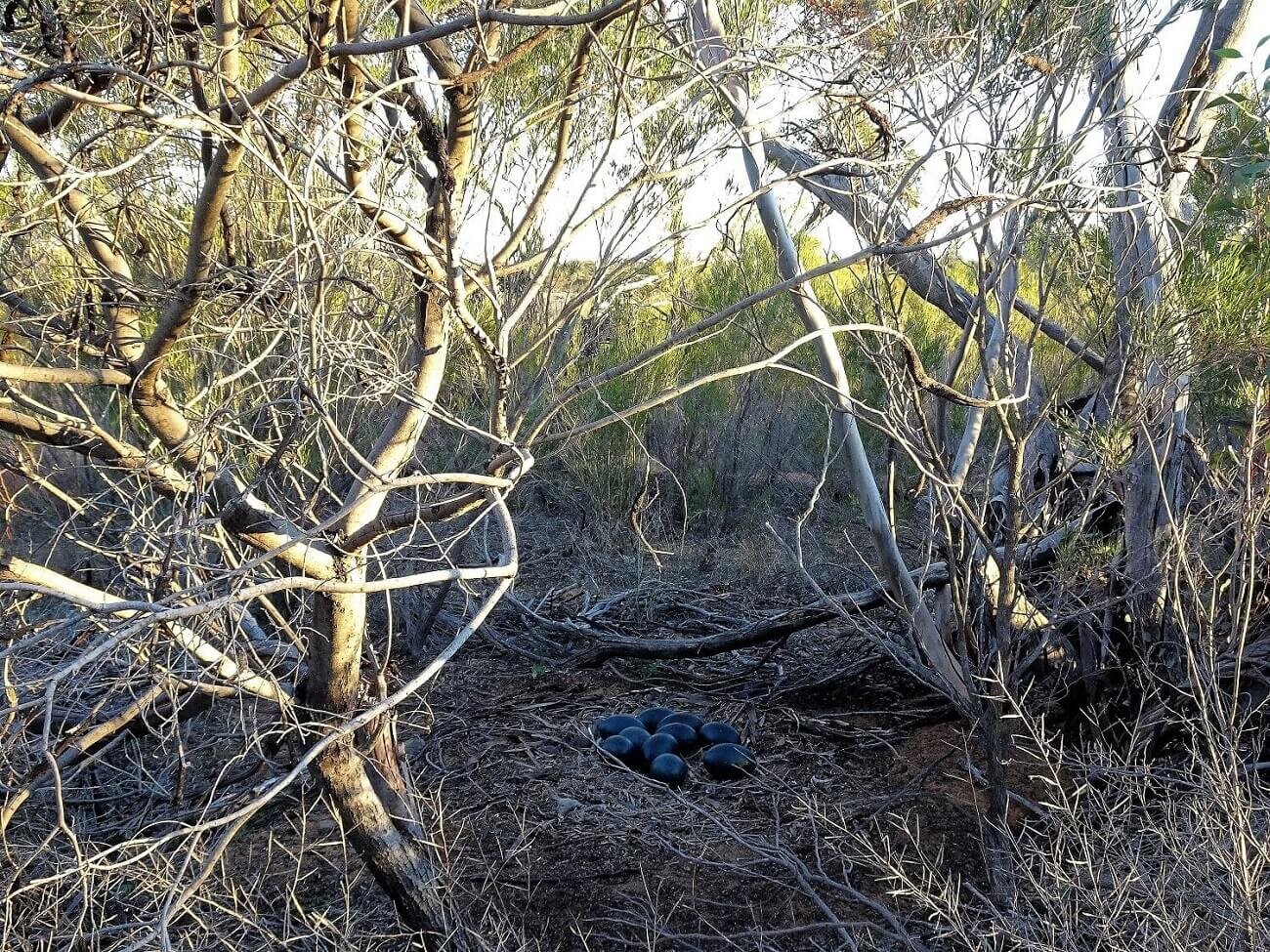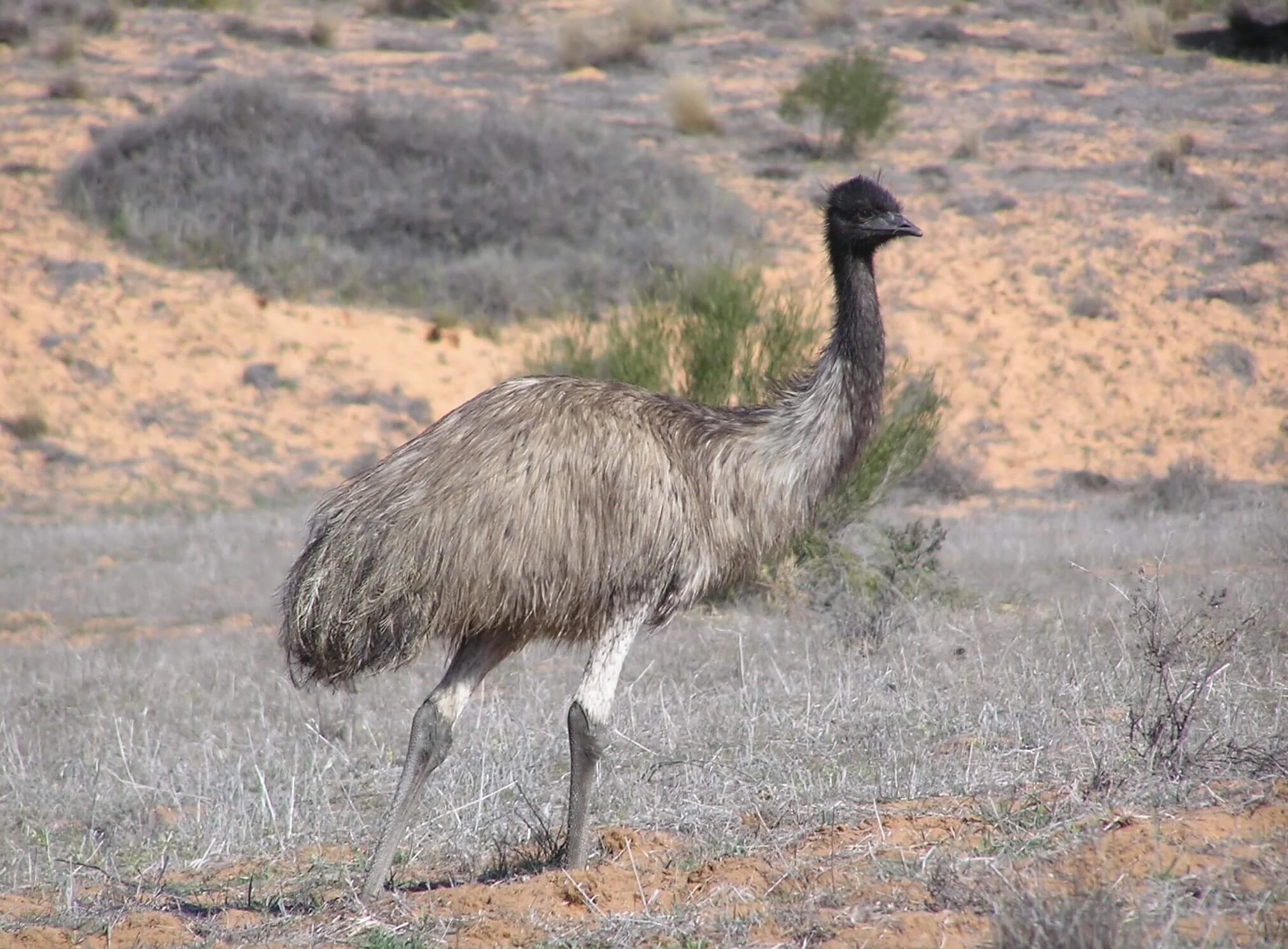Emus, green eggs and stripey chicks
We usually have one emu nest on Raakajlim. Sometimes we come across dad sitting on the eggs (around July) and we know to stay away from that area.
Other years, we don’t notice the nest until after the eggs have hatched (around the end of August). Sometimes not all of the eggs hatch, giving us an opportunity to enjoy the beautiful deep green of the eggs (whilst hoping it isn’t so rotten it explodes … imagine that).
We occasionally see stripey emu chicks around September but I’ve never managed to get a photo. Luckily, our friends at Outside Four Walls have! Check out the video here.
The emus can nest in the strangest spots. One year a nice location nestled in the Mallee, another year under some Twiggy Lignum out in the open, and one year in a particularly unattractive spot amongst some dead Hopbush …. And it’s not really much of a nest either.
I do love emus, from their funny vestigial wings, to the way their skirts flap as they run along - Phil calls them “running bushes”. They have a curious nature which means you can sometimes call them over by waving your hat in the air (Phil tells our friends they need to peddle their legs in the air to attract an emu over – hilarious! Not sure who looks the silliest, the emu or our friends.) I like the deep booming call which sounds like drums in the bush, and the way they flare their neck when they chase our dog.
The juveniles are very attractive too with their black heads (in about October). It’s amazing sometimes how many chicks dad has. We think some years he might adopt a few because we saw 14 young ones one year. Emus are particularly successful when there is good fox control.
Emus can be annoying though. If you get stuck behind an emu that has decided it wants to run along a track, it can run for kilometers without deviating. It’s best just to stop and wait it out. One day we decided to do that and had a cup of tea on the side of a bush track. Fifteen minutes later we caught up with the emu, still running along the track … sigh.
And if you see an emu crossing the road, always look for the second, third or fourth emu. They have a bit of groupthink and if one emu decides to cross the road, the others always follow flat out, no matter what.
Lots more about emus in this article http://www.abc.net.au/science/articles/2000/08/01/2689167.htm 55 days with no food - wow.
More on emus, and their poo, here https://www.malleeconservation.com.au/blog/emu-poo
First published September 3 2020, updated 2021.







